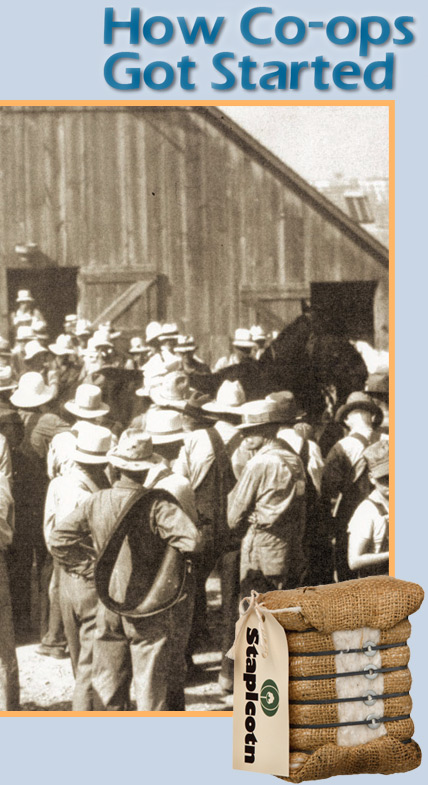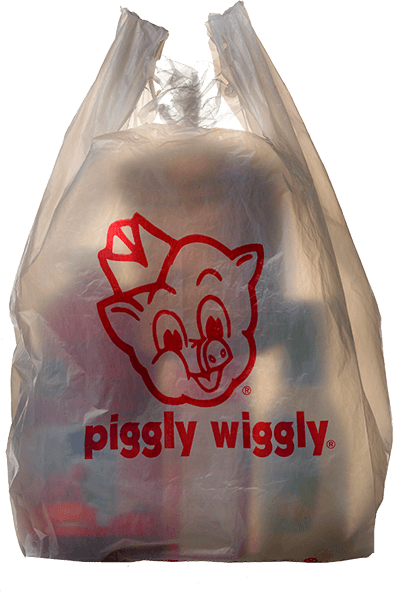
The history of cooperatives begins centuries ago in early societies when people worked together to gather food or build shelter to meet the needs within the group. The concept was more formalized into a business model during the Industrial Revolution in Europe in the late 18th and 19th centuries when the earliest cooperatives began to appear.
Since then, the cooperative business model has spread around the world. The co-op model enables people to pool their buying power to get better prices and terms and to market their products and services more effectively. From European laborers to rural Americans and Third World farmers, the people helped by the cooperative model are as diverse as the types of co-ops they have formed.
Story after story could be told about groups of people with similar interests and needs banding together to form a business that they both own and use. Although the details vary, the same theme carries throughout. It is a story of shared independence, when people display determination and cooperation in equal measure.
It's the story of:
The United States has...
- 30 cooperatives with annual revenues in excess of $1 billion
- 250 purchasing cooperatives that offer group buying and shared services to more than 50,000 independent businesses
- 270 rural communications cooperatives
- 300 cooperative groceries
- 900 rural electric cooperatives
- 1,000 mutual insurance companies
- 3,000 housing cooperatives that provide homes for more than 1.5 million households
- 3,000 agricultural cooperatives
- 9,300 credit unions
- 40,000 cooperatives total

Piggly Wiggly
- Benjamin Franklin uniting the citizens of Philadelphia in 1752 to meet at the courthouse and subscribe to the first mutual fire insurance company, "whereby every man might help another without any disservice to himself." The cooperative he started, the Philadelphia Contributorship for the Insurance of Houses from Loss of Fire, still exists today.
- Underprivileged textile workers saving money for a year to start a co-op store as an alternative to the company store that charged unfair prices. The Rochdale Equitable Pioneers Society opened their store at 31 Toad Lane in England in December 1844. It is considered the birthplace of the modern cooperative movement.
- Farmers pooling their money to buy supplies in bulk at lower prices and pooling their harvest to market their products at higher prices. Most early American co-ops were formed for the benefit of farmers, and many agricultural co-ops remain strong today.
- Rural Americans taking the initiative to persuade their neighbors to sacrifice $10 for a membership fee in the 1930s to bring electricity to their farms for the first time. Electric co-ops brought power to rural areas, when power companies would not.
- Working moms who get together to form a cooperative childcare center for their children. From housing to healthcare, cooperatives have been formed by urban citizens to meet a variety of specific needs.
Cooperatives are an interesting study for a business or economics textbook, and they are equally important to social studies. They are an enduring tribute to the human spirit and what can happen when people work together for a common goal.
– Staff
Did You Know?
When the first Continental Congress met in Philadelphia in 1774, the delegates chose to use the ground floor of Carpenter's Hall, which was owned mutually by its member-carpenters. At that time Carpenters Hall had rented out the second floor to the Library Company. Nine signers of the Declaration of Independence were also members of the Library Company. Both Carpenter's Hall (in 1774) and the Library Company (when it owned its first building in 1790) were insured by the first formal mutual in America, the Philadelphia Contributorship. -- From David Franklin's essay, 250 Years of Cooperation in America
Top Co-ops in the Tenth Farm Credit District
Data as of Dec. 31, 2003, gathered by the National Cooperative Bank as part of the Co-op Top 100 List. For more information, visit www.coop100.coop.
| RANK | CO-OP | STATE | ANN. REV. (in millions) |
TYPE |
| 31 | Staplcotn Inc. | MS | $988 | Ag |
| 35 | Affiliated Foods, Inc. | TX | $936 | Grocery |
| 43 | Plains Cotton Cooperative Association |
TX | $801 | Ag |
| 62 | Piggly Wiggly | AL | $571 | Grocery |
| 70 | Brazos Electric Power | TX | $535 | Energy |
| 76 | Associated Grocers | LA | $473 | Grocery |
| 77 | Farm Credit Bank of Texas | TX | $465 | Ag Finance |
| 79 | VHA Inc. | TX | $451 | Health Care |
| 89 | South Mississippi Electric Power Association |
MS | $412 | Energy |
| 91 | Alabama Electric Cooperative Inc. | AL | $411 | Energy |
| 92 | Allied Building Stores Inc. | LA | $368 | Hardware/ Lumber |
| 97 | Associated Grocers of the South | AL | $321 | Grocery |
Number of Rural Co-ops in the Tenth Farm Credit District
| CO-OP TYPE | AL | LA | MS | NM | TX |
| Ag Co-ops | 61 | 46 | 70 | 12 | 223 |
| Credit Unions | 168 | 270 | 115 | 54 | 667 |
| Rural Electrics | 22 | 14 | 25 | 17 | 85 |
| Rural Telecommunications | 3 | 0 | 0 | 8 | 20 |
| Farm Credit Institutions | 2 | 2 | 2 | 1 | 12 |
| Total* (est.) | 256 | 332 | 212 | 92 | 1,007 |
* Does not include housing, grocery and other types of co-ops. For more information, visit www.coopmonth.coop.